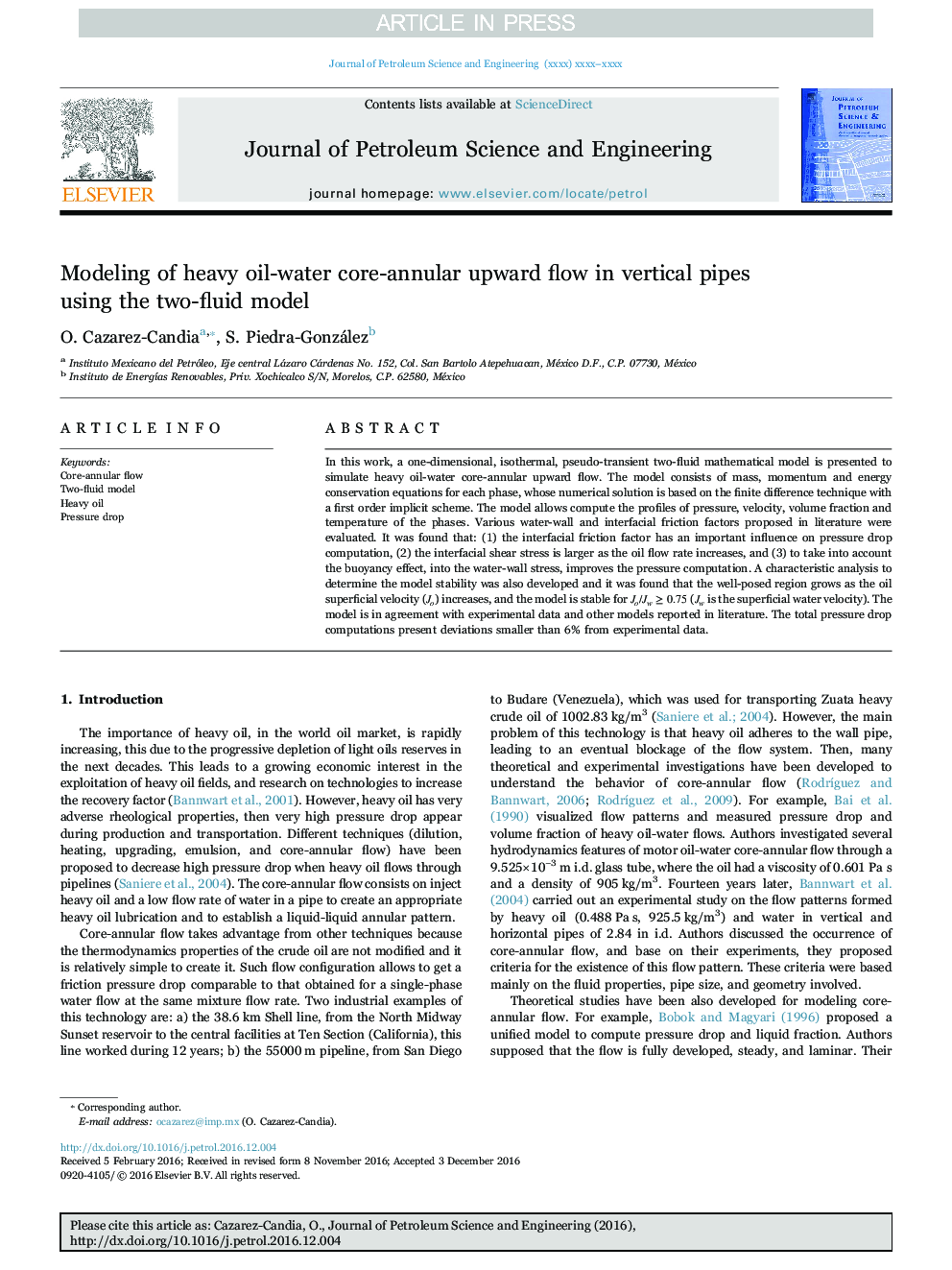| Article ID | Journal | Published Year | Pages | File Type |
|---|---|---|---|---|
| 5484328 | Journal of Petroleum Science and Engineering | 2017 | 8 Pages |
Abstract
In this work, a one-dimensional, isothermal, pseudo-transient two-fluid mathematical model is presented to simulate heavy oil-water core-annular upward flow. The model consists of mass, momentum and energy conservation equations for each phase, whose numerical solution is based on the finite difference technique with a first order implicit scheme. The model allows compute the profiles of pressure, velocity, volume fraction and temperature of the phases. Various water-wall and interfacial friction factors proposed in literature were evaluated. It was found that: (1) the interfacial friction factor has an important influence on pressure drop computation, (2) the interfacial shear stress is larger as the oil flow rate increases, and (3) to take into account the buoyancy effect, into the water-wall stress, improves the pressure computation. A characteristic analysis to determine the model stability was also developed and it was found that the well-posed region grows as the oil superficial velocity (Jo) increases, and the model is stable for Jo/Jwâ¥0.75 (Jw is the superficial water velocity). The model is in agreement with experimental data and other models reported in literature. The total pressure drop computations present deviations smaller than 6% from experimental data.
Related Topics
Physical Sciences and Engineering
Earth and Planetary Sciences
Economic Geology
Authors
O. Cazarez-Candia, S. Piedra-González,
